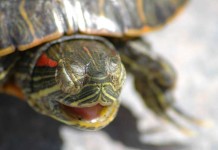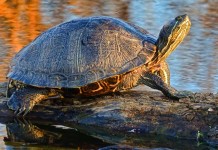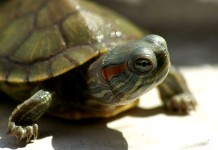Red eared slider hibernation is a popular topic among many slider keepers and breeders. Should you allow your sliders to hibernate or not? That is the common topic of contention. In general, you only want your sliders to hibernate if you are planning on breeding them. Hibernation in the wild is very much a part of the breeding cycle of red eared sliders and you don’t want to induce it unless you have to.
If you are planning on breeding your turtles, however, then you need to know the effects of hibernation on red eared sliders. First, a little factoid: sliders do not actually hibernate, they brumate. The difference is semantics, but brumation is essentially a lighter version of hibernation. During brumation, sliders are not actually asleep like hibernating animals and tend to be therefore slightly more active than a hibernating animal. For the sake of simplicity, however, we’ll refer to it as hibernation.
So, on to red eared slider hibernation. As you probably know, turtles and other reptiles, being ectothermic, have to find a way to survive cold temperature that would normally lower their body temperature to fatal levels. As a result, all such species have adapted a way to do so by hibernating. During this period, they slow their body down to such slow levels that they barely need to eat, drink, or breathe – if they do at all!
The science of red eared slider hibernation works like this: when a turtle is brought to around 41 degrees Fahrenheit, its blood viscosity is slowed significantly. As you probably already know, your body requires energy to move blood around the body. When blood viscosity is reduced, it becomes “thin” and easier to move around the body, and requiring less energy to do so. This has an avalanche effect on the rest of the turtle’s systems—it only needs to eat, drink, and breathe enough to barely keep its body going. Which is a good thing, since not only is it cold during the fall and winter months, but there is also less food to be had. Without this adaptation, red eared sliders as a species would not survive.
The hibernation of red eared sliders isn’t wholly understood by most people, but if you are going to breed you sliders you need to know the facts. You have to reduce the temperature at the appropriate rate and stabilize it at the appropriate time to induce healthy hibernation. Improper hibernation could prove unhealthy and even fatal.
Recommended: Small Animal Supplies Thermometer Hygrometer Combo Card











